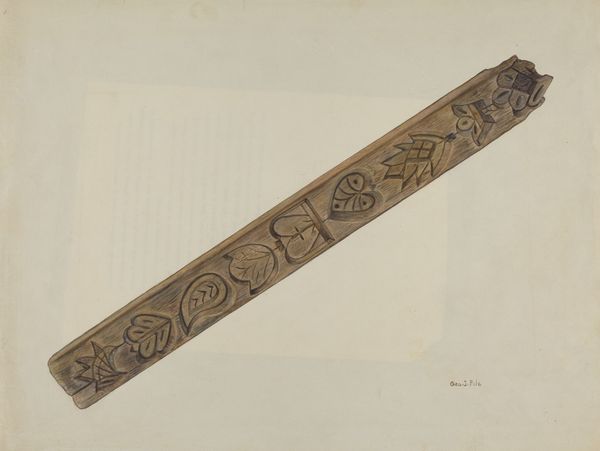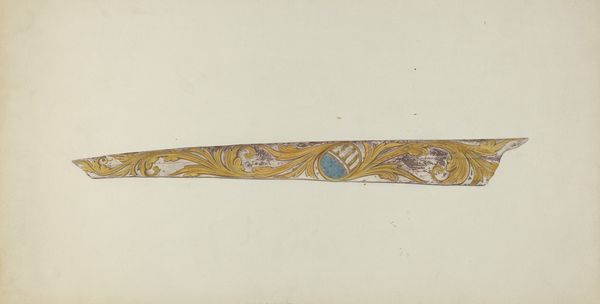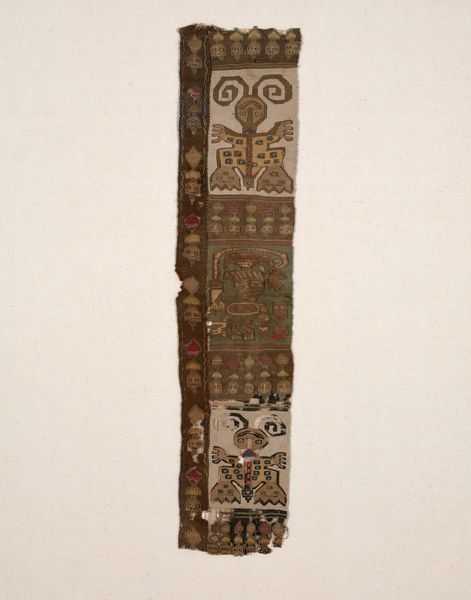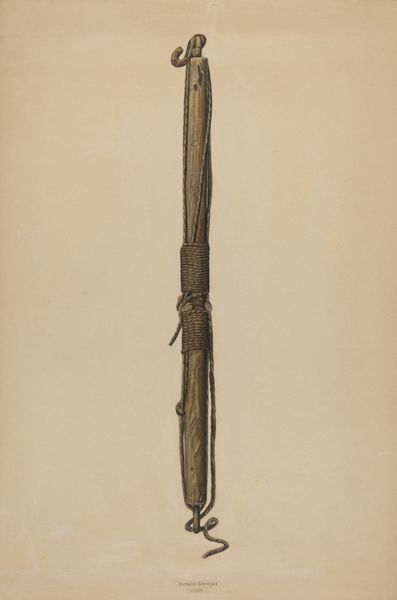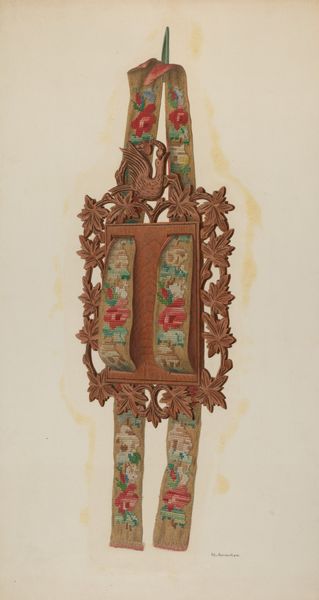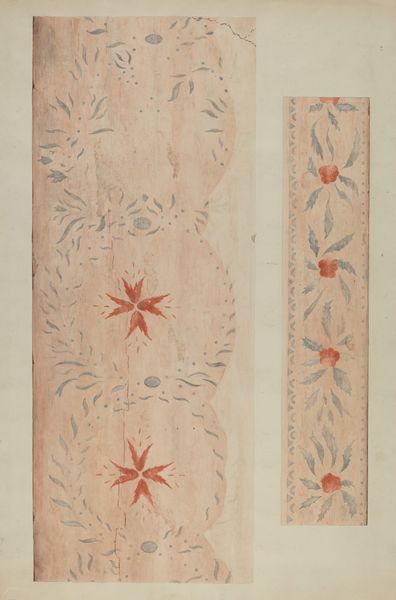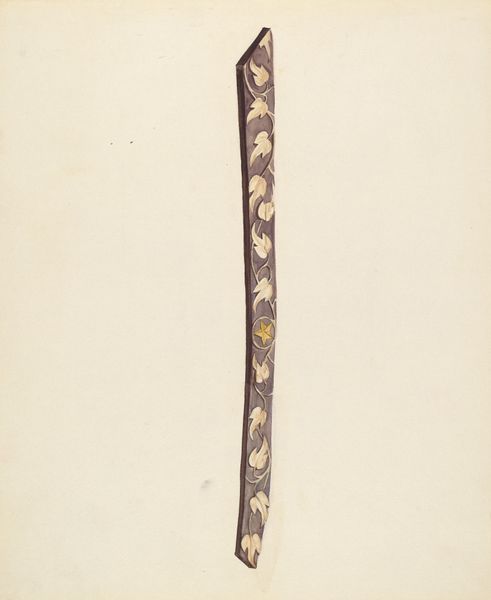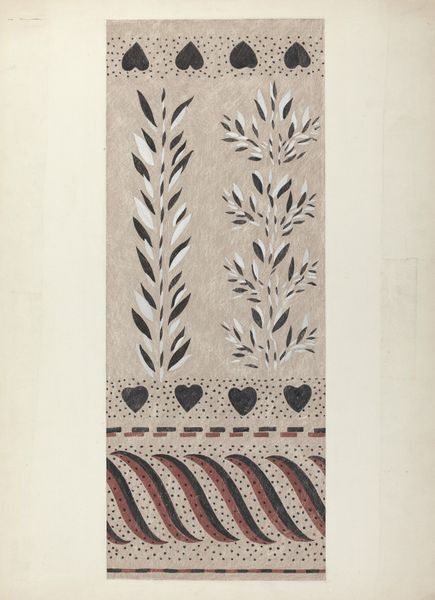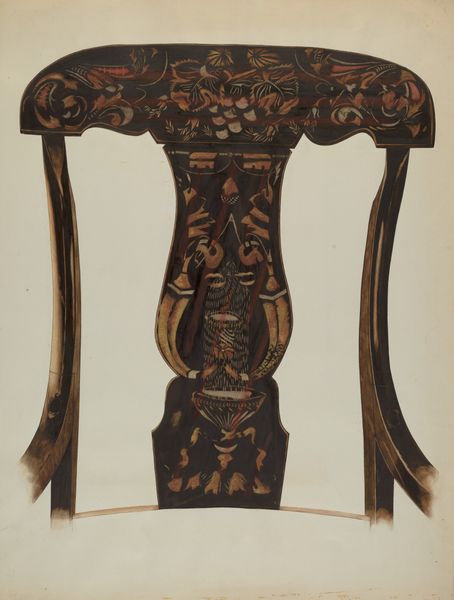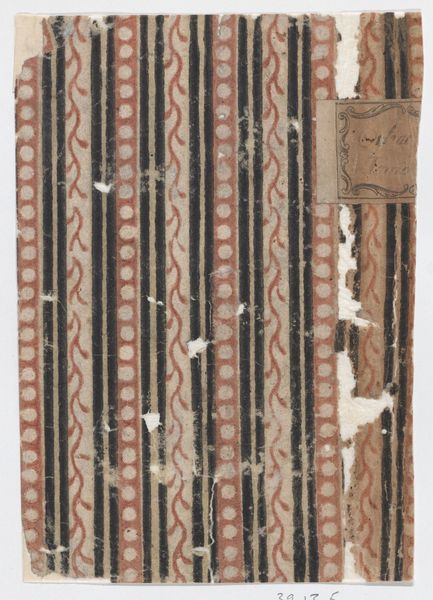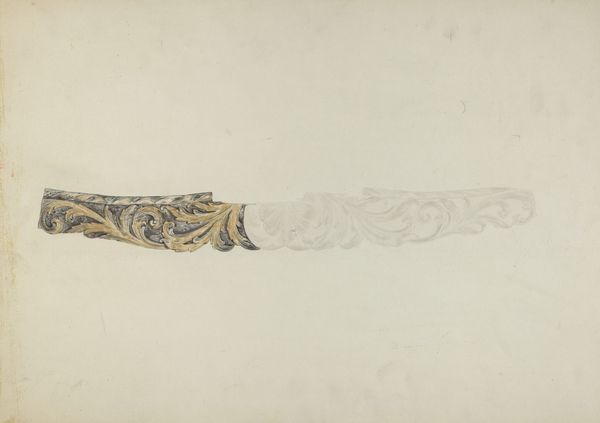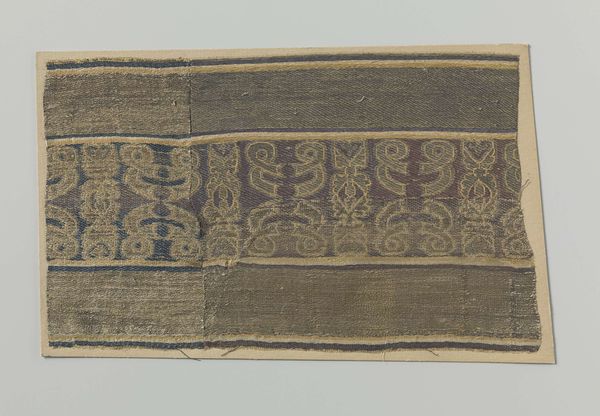
drawing, carving, wood, charcoal
#
drawing
#
carving
#
charcoal drawing
#
figuration
#
folk-art
#
wood
#
charcoal
#
realism
Dimensions: overall: 54.8 x 33.3 cm (21 9/16 x 13 1/8 in.) Original IAD Object: 20" long
Copyright: National Gallery of Art: CC0 1.0
Curator: Immediately, I'm struck by the folksy feel of this piece. It's got a down-to-earth, handmade quality that's very appealing. Editor: Indeed. Here we have what's described as a “Walking Stick,” rendered in a drawing between 1935 and 1942. Clyde L. Cheney is the artist. You can see how it brings together the distinct practices of carving wood with drawing, incorporating charcoal to add a sense of depth and texture. Curator: The juxtaposition of the three-dimensional stick with the two-dimensional rendering on what appears to be paper is an interesting choice, particularly how it's presented on the flattened area as if this were a technical drawing showing the carving as a single plain. I wonder about the original function and context of the actual walking stick? Was it intended as a practical object or primarily decorative, and how did its place in the culture inform this drawing of it? Editor: Well, during the period it was made, folk art occupied a unique place in the American artistic landscape, particularly due to its connection with regional identity. Cheney could have been participating in a wider movement to capture the character of America through everyday objects and labor practices. This walking stick might represent something quite specific about a region or a community that was felt to be important enough to document in this artistic manner. The drawing could be seen as part of this movement to legitimize vernacular arts. Curator: I agree; and the material itself—the wood—speaks to this as well. The medium is almost as much the message as the images carved into it. Looking closer at the textures the artist was trying to recreate with the charcoal medium, I would wonder if this tool was particularly prized, maybe even belonging to an important person within a smaller social setting? Editor: That brings to mind questions about the work's accessibility in that time. Would this have been viewed in a public gallery, or would it have primarily been shown in more regional art spaces? Its social significance might stem more from being an image circulated among certain circles and, even now, it helps illuminate the social and aesthetic values of that era. Curator: It does that so beautifully. To consider art history within these lines and textures really enriches one’s understanding and, indeed, one's sense of connection to history. Editor: Absolutely. Viewing the object from this lens adds new layers of understanding and allows for a deeper, more personal interaction with artistic expression that bridges technique and social relevance.
Comments
No comments
Be the first to comment and join the conversation on the ultimate creative platform.
